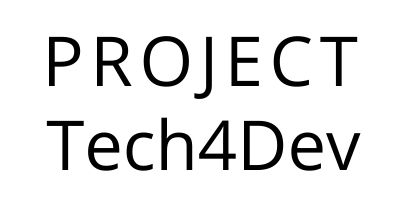Today, technology has become integral to almost all aspects of work—from implementing and standardising processes and collecting data to monitoring and evaluation and helping an organisation scale. This was increasingly apparent during the COVID-19 pandemic, when all organisations turned to technologies like WhatsApp and Zoom to stay connected and deliver their programmes to communities. And yet in the nonprofit sector, tech is viewed as an overhead rather than being fundamental to the functioning of an organisation. When building budgets for programmes, nonprofits (and donors) must change their mindsets and look at tech as core infrastructure; without this orientation, organisations lose out because they are bearing the cost of technology anyway. It makes no sense not to account for it properly.
We misunderstand technology
1. Tech is an enabler, not the solution
When it comes to nonprofits implementing tech, there are a few misconceptions or assumptions we have encountered during our work at Tech4Dev. The first misconception is that tech is the solution. Tech is, in fact, an enabler—it enables an effective, efficient solution. It cannot by itself solve problems. For example, using tech for mobile data collection is superb. However, to use this technology effectively, an organisation must have the processes and systems in place to know what data to collect, the audience from whom they will collect the data, and the field staff trained in the system and reasonably knowledgeable about data collection and biases. In such a scenario, tech enables high-quality data collection, but the secret is in the organisation process.
2. It’s not about the size of an organisation
The second misconception is that there is a ‘right size’ an organisation needs to get to before implementing tech solutions. In other words, tech is not for smaller grassroots organisations. A better way to think about this would be to ask yourself: Do I currently have a solution for the problem at hand, and do I have a systematic way of implementing that solution? If the answer is yes, then size should not be a factor at all. For instance, we’ve seen small organisations use Google Sheets extremely effectively. So you can use cheap tech at a small scale, and you can also use cheap tech on a large scale. We’ve also seen really poor tech being used in both small organisations as well as large ones. So it’s not about size but about having a systematic approach, because even though tech makes things more efficient, it also tends to add more complexity and introduce another element that employees will have to learn and work with.


We were working with a nonprofit organisation—let’s call it Team Health—that had a large number of fieldworkers, from whom they would receive data via multiple channels including WhatsApp, emails, and phone calls. None of this data arrived in a standardised or structured manner, nor was any of it recorded. Team Health wanted to change this. They were keen to introduce an app, assuming that all their fieldworkers would know how to enter the requisite information in the exact way that the tech required, and that would lead to them having standardised data exactly how they needed it. But because their processes at the time were not standardised, and their fieldworkers were accustomed to a certain way of submitting data, the app would not solve their problem. In fact, it might have made things worse had they gone down that path.
3. Asking donors to ‘fund tech‘
The third misconception among organisations is that funders are hesitant to pay for tech. Instead of asking donors to ‘fund technology’, nonprofits should articulate why technology is important to the organisation’s core functioning. They must incorporate it as such in their proposals. We need to educate the funder ecosystem as well as the nonprofit ecosystem for this to become a reality.
Take the case of an organisation—Team Sanitation—working on community toilets for the urban poor in India. They used a fair amount of technology for data collection and geographic information system (GIS) mapping in their day-to-day operations. These tools were core to their project, and so Team Sanitation started incorporating all costs associated with using these technologies (for example, licensing and operational costs) as necessary project costs in their funding proposals. And they haven’t got any pushback from donors for doing so. As long as organisations can demonstrate the need for tech within their programmes, most donors will not have any issues supporting such core expenses.
4. Thinking that a custom tech solution needs to be built from scratch
The fourth mistake many organisations make is to think that they need to build custom tech solutions from scratch. But before thinking about this nonprofits need to define their problems and needs. Detailing what their top problems are, why they are important, and how they impact the work that they are trying to do can help them understand where tech might help, and where it might not. If tech is in fact the way to go, then it’s important to acknowledge that very few nonprofits have a unique problem that they need solved. The context, communities, and resources might differ, but fundamentally the problem a nonprofit is trying to solve has likely been attempted or solved by somebody else already.
Instead of investing resources in building a solution from scratch, it’s smarter to research existing solutions and tools that can be modified for specific needs.
For instance, let’s take the case of an organisation that is in the business of training primary school teachers, and finds that doing this at scale, in person, is cost-prohibitive. Surely, there are others that have faced this issue of cost and scale, and have worked on a solution. Even still, in the nonprofit sector, there is a tendency to build custom tech platforms when they are not needed. Both funders and nonprofits have been burnt by this, where a solution was built, and in some cases the investment had to be written off, and in others there was little progress to show for it. Custom tech is not only a waste of resources, time, and effort, but it is also not scalable. For this reason, instead of investing resources in building a solution from scratch, it’s smarter to research existing solutions and tools that can be modified for specific needs. We’ve seen multiple custom builds of mobile data collection platforms, case management systems, and customer relationship management (CRM) systems across different nonprofits, most of which were inferior and lacking compared to the current open-source and commercially available solutions. ‘Research before build’ is a mantra we follow quite religiously within Tech4Dev.

We need to build a culture of collaboration and sharing knowledge where everyone benefits
Given that there are existing solutions to problems that several nonprofits are trying to solve, the question arises: What are the barriers to accessing such information?
Most nonprofits do not have the technological knowledge or expertise that is helpful in thinking about what tools might be useful for their specific problem. Connecting the dots between the problem and potentially useful technologies is usually the responsibility of the software partner. However, since software partners often have limited experience in the social sector, their approach to an organisation’s problem is to simply build a solution specifically for the nonprofit. This is far from ideal. Not only do we need software partners that are well versed with the social sector and the problems nonprofits are trying to solve, but we also need nonprofits to strengthen their understanding of tech.
In order to do this, we need to build a knowledge base for tech that everyone can learn from—nonprofits, donors, and software partners. This kind of open ecosystem will also help funders realise when they are funding similar solutions across multiple organisations, and it will help organisations learn from each other’s work.
We must prioritise open-source publishing of the work
To build an accessible ecosystem, the first step is to share existing knowledge with all the relevant stakeholders. Nonprofits should publish their programmes, challenges, solutions, and learning in the public domain. For example, if a nonprofit is spending 300 hours working on a project, it should spend at least 10 hours creating open-source material that helps people understand what it is that they are doing.
Organisations must ideally move beyond the fear of sharing their ‘trade secrets’.
Creating awareness through open-sourced content is crucial for organisations in the social sector so they can learn from and support each other better. While this might not happen right away, as more and more nonprofits share their expertise, the social sector can start to build these broader ecosystems faster. Organisations must ideally move beyond the fear of sharing their ‘trade secrets’, in recognition of the fact that paying it forward will benefit them in the long run.
Donors and intermediary organisations have an important role to play
Organisations like IDinsight do an amazing job publishing their work on a timely basis as seen from their blog and LinkedIn pages. Sharing this information helps distribute knowledge across a wide variety of ecosystem players, hence strengthening the ecosystem. Donors can nudge these organisations to publish their work as it is being done to help disseminate the knowledge as early as possible. We should never wait till we have the perfect, well-crafted report. Publishing things as the work is being done is another mantra for the projects we run within Tech4Dev.
In India today, the onus of facilitating the building of an ecosystem falls more on funders and intermediary organisations than it does on nonprofits. This is because nonprofits are resource-constrained and devote majority of their efforts to their programmes. Moreover, they do not have the kind of influence and clout that donors have, and might not have the skills either.
The first step that funders can take is to move away from traditional contracts that restrict sharing of content and intellectual property (IP) and towards sharing IP in the public domain. Further, given that funders typically work with multiple organisations within a specific sector, they might be better positioned to see the bigger picture here. They can also help nonprofits choose software partners. Here, they must be sensitive to the skewed funder–nonprofit power dynamic, and play a supportive role rather than a directive one. There is a lot that funders can do to strengthen the tech ecosystem within the social sector. Unfortunately, there are very few donors and organisations focused on this ecosystem. We need a much greater push towards building ecosystems and platforms at a much faster rate, and providing adequate support to sustain them. The social sector needs such spaces so they can integrate technology better and more smartly across the work they do.
This is the fourth article in an 8-part series which seeks to build a knowledge base on using technology for social good.
—
Know more
- Read this guide—’Don’t build it’—for those working in technology for development.
- Most of what you might want has probably already been built. Take a look at this list of public digital goods.
- Read this to learn more about open-source in the social sector.






